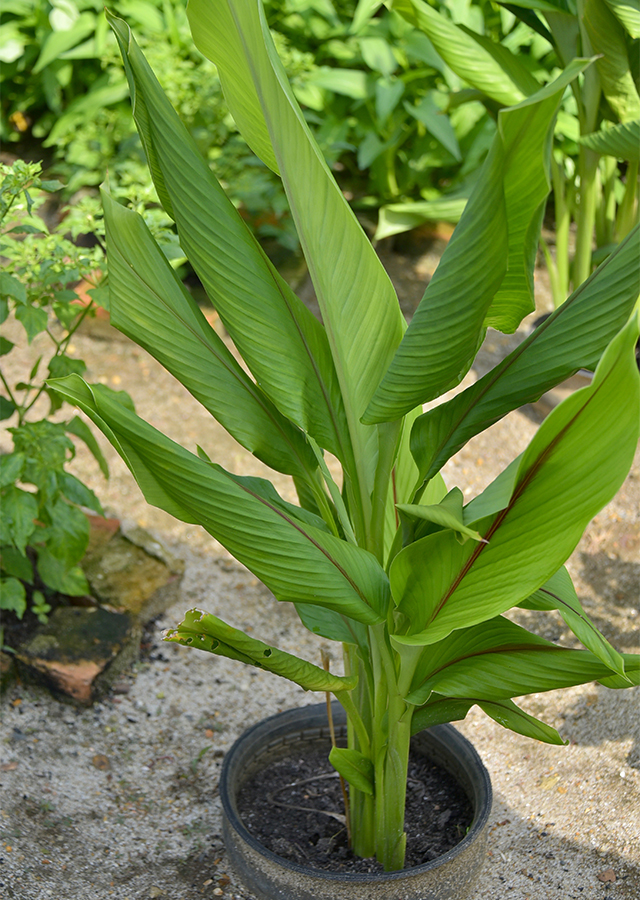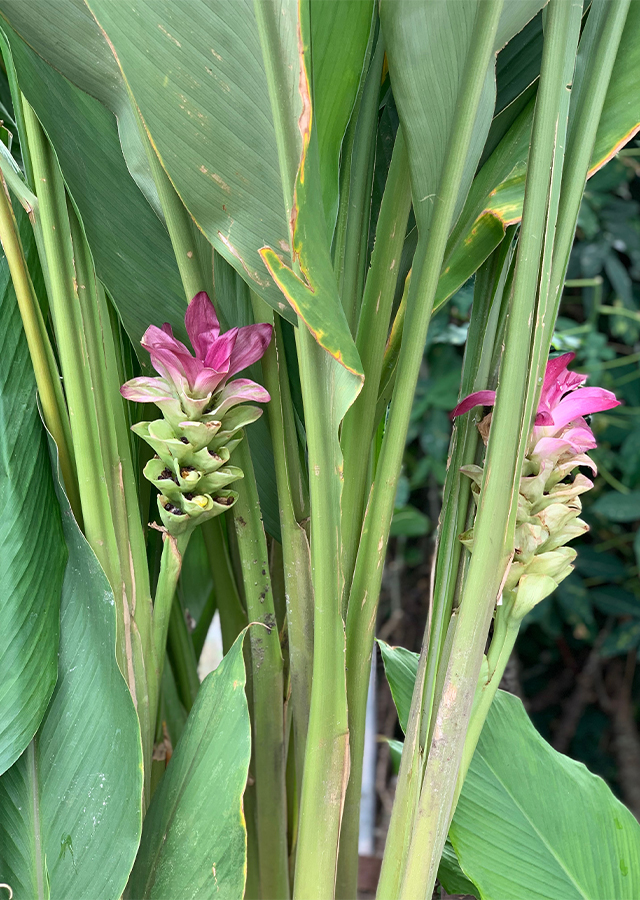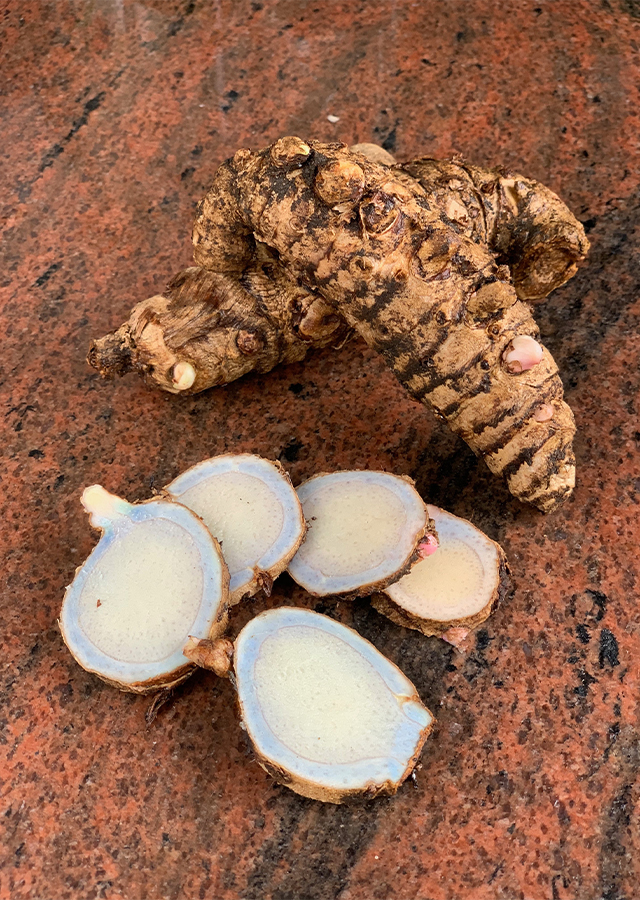Hidden-lilies
Curcuma aeruginosa Roxb.
Zingiberaceae
Location in our garden
Principal



Synonym
Habitus
Herbaceous. Erect, tillering herb, up to 2 m tall
Part Used
Rhizome
Growing Requirements
Need Shade
Habitat
Riverbanks
Forest
Overview
From Indo-China to West Malaysia, the genus is indigenous. In Malaysia and
Indonesia, it is widely cultivated. For use in traditional medicine and as fruit, the
plant is harvested from the wild. It is sometimes grown as a medicinal plant in
Malaysia and is occasionally cultivated as an ornamental as well.
Vernacular Names
Temu Hitam (Indonesia), Temu Ireng (Javanese, Balinese), Koneng Hideung (Sundanese), Temu erang, Temu Hitam (Malaysia), Karimanjal (India), Kha Min Dam (Thailand), Nghẹ Ten Dong (Vietnam).
Agroecology
It thrives in the open or partial shade in a
wet, humid climate. It grows in different soil
types, but prefers fertile soils that are loose,
well-textured and well-drained. Rainforests,
where it is frequently found on the banks of
the river or on the edges of the forest; grassy
areas and teak forests at altitudes between
400 and 750 meters asl.
Morphology
- Root/rhizome - up to 16 cm in length and 3 cm in thickness. The outside is gray and shiny, tip pink, inside bluish or blue-green with white cortex.
- Stems - green, terminal on ovoid primary rhizome. Leave sheaths are up to 50 cm long.
- Leaves - leaf sheats to 50 cm long, blades elliptical to oblong-lanceolate, 30-80cm x 9-20cm, green with wide purplish-brown suffusion on each side of midrib on distal half.
- Flowers - inflorescence on a separate shoot, bracts pale green, coma bracts purple. corolla about 4.5 cm long, deep crimson-pink, labellum about 17mm x 17mm, pale yellow with deep yellow median band, staminodes longitudinally folded, pale yellow, anther spurred.
Cultivation
- It is primarily propagated while the plant is dormant by dividing the rhizome.
- Seeds can also be used. They will germinate best at around 20°C.
Chemical Constituents
- Flavanoid, tannin, curcumin, isocurcumenol, ferulic acid, sesquiterpene
Traditional Medicinal Uses
- Antioxidant, Anti-inflammatory, Treatment of tumors, Uterine Relaxant, Anti-androgenic, Antiplatelet, Analgesic/Antinociceptive, Antiviral, Antimicrobia
- In India, rhizome is medically used as an antidiarrhoeal and antifungal and externally as an astringent for wounds.
- Postpartum uterine and peri-menopausal bleeding as a carminative, analgesic and anti-inflammatory agent for uterine inflammation in Thai traditional medicine for the treatment of inflammation, and as a portion of Thai herbal medicinal recipes used to decrease dysmenorrhea. It is one of the universal tonic or 'ubat jamu' ingredients in Singapore, prescribed for cough and asthma and used externally pounded for scurf in coconut oil and to treat mental disturbances.
- A root extract is used as a local anesthetic in cold, cough, asthma and other preparations in Indonesian traditional medicine, in addition to having an antispasmodic effect. It is known to be depurative and used for the treatment of exanthema both internally and externally and also as a poultice for itching.
- The rhizomes are used to treat a number of conditions such as colic, menstrual disorders, asthma and cough, obesity, rheumatism, skin conditions such as scurvy and skin itching.
- In Indonesia and Thailand, to speed up the ochia, rhizomes are the key ingredient of a decoction given to women after childbirth.
